Big Schools vs Small Schools - Which one is right for you?
The greatest part of our childhood and adolescence is spent in school. In the confines of this institution, we learn the essential skills which will help us navigate the rest of our lives. However, choosing a school isn't as simple as many people make it out to be. Many aspects have to be taken into consideration when choosing an institution to study in. The factor which most people ponder over is the size, or number of students in the school. This plays a big role in the school experience, and today we're going to look at which type of school might be right for you.
To get more insight into how the system works at both types of schools, I spoke to Lubna R. Kalam, a teacher with over 10 years of experience. She has taught in a number of schools – of these, two are relatively small schools with less than 300 students. She currently teaches at a large school, with over 2000 students.
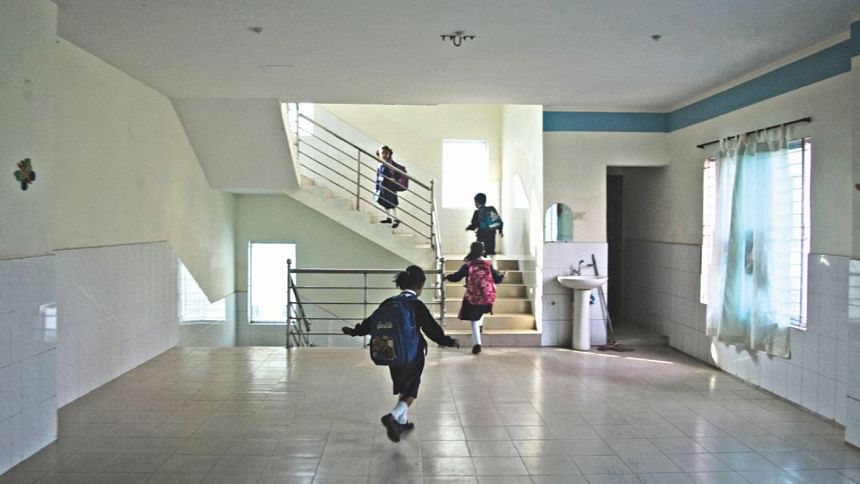
Having teaching experience in both large and small schools, she had this to say about the two types: "When it comes to teaching, I feel that big schools have an edge. In my experience, bigger schools are much more systematic and organised when it comes to schoolwork. Syllabuses are set and maintained with more regularity in a big school, whereas the small schools I've taught in have been more laid back in this regard. Not only is the coursework in bigger schools better planned, but the teachers are also more specialised. In comparison, some of the smaller schools I've taught in have had the same teacher taking Science, History and other subjects as well."
Kalam also went over the advantages of being in a smaller school: "Students can definitely get more attention from the teachers in a small school. When you're in a big school with large classrooms, it's difficult to give individual attention to weaker students. This is why I feel weaker students or students requiring more attention would perform better in small schools. It's much easier for a student to get extra attention in a small classroom, whereas in large classrooms students would have to wait till after school to receive extra help."
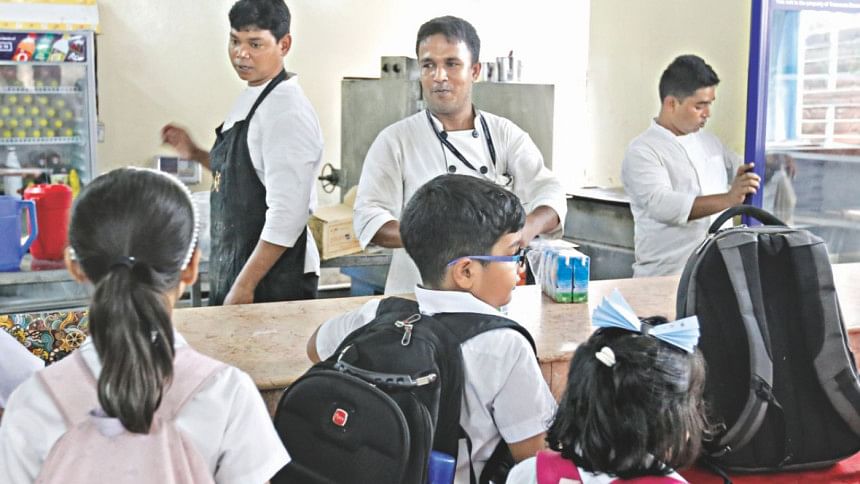
When it comes to activities, Kalam is more in favour of big schools: "While this does vary from institution to institution, generally bigger schools have better management of extra-curricular activities. These schools regularly participate and achieve honours in inter-school competitions. Big schools usually have better mentors for activities like debating and Olympiads, better coaches for sports like football, cricket and basketball. This is why students from big schools generally excel at these competitions, compared to those from smaller ones."
Her concluding remarks were: "Overall, the whole setup is much more professional in bigger schools. I believe students are challenged more in a bigger school, and this is what helps them develop more than they ever could at a smaller school."
Opinions varied greatly when students were asked about what aspects of their chosen school appealed to them.
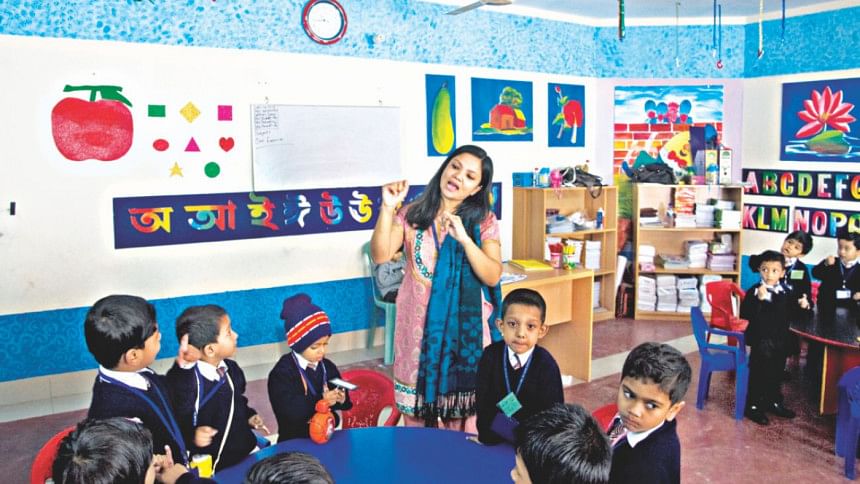
"In small schools, it's easier to maintain discipline and students are more well-behaved, so classes run more smoothly," said Maisha M. Prome. Maisha is a former student of British Columbia School (a small school) and Oxford International School (a school with over 2500 students). She is currently an undergraduate student at MIT, and also the winner of two Merit prizes at the International Biology Olympiad. "Students tend to do better in smaller schools since they can get individual attention, but then again, there are a lot of people who chose smaller schools because they didn't pass the admission test at bigger schools. I knew my classmates really well at British Columbia whereas I only really knew like 15 people at Oxford. In the end, however, there was much more competition at Oxford which helped me develop more as a student," she added.
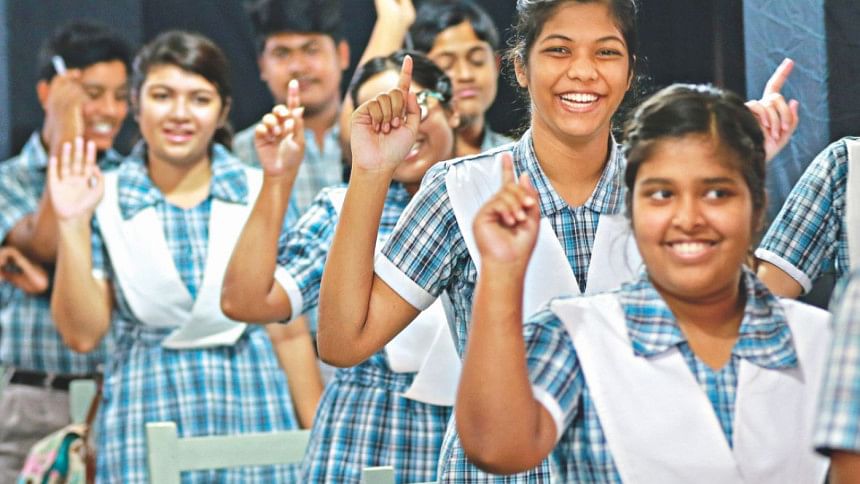
"I've been in both a small school (Tiny Tots) and a pretty big one (Mastermind), and the differences are quite stark," said Warish Zaman Orko, an undergraduate student at University of Rochester. "In Mastermind, the overall education system was more rigorous, with better facilities and staff all around." He also dismissed the notion that large schools don't cater to individual needs, saying, "It's not true that you can't get personalised attention in a large school; you just have to make an effort to ask for it and follow up." Having represented Bangladesh at the World Schools Debating Championships, Warish spoke highly of the debating opportunities at Mastermind: "I had the privilege of being coached by the same person who also coached the National Debate Team. That is unimaginable in a small school, and it is crucial to remember the sheer number of doors that a large school can open for you – if you put in the work."
Aminul Islam Ishman (an A Level graduate) is someone who has studied in both types of schools – Seabreeze International School and Academia, and his preference varied depending on what the topic of discussion was. "In Seabreeze, the whole class was friends with each another. This made for a very 'homely' atmosphere and made sure there was no bullying, at least in my case. The small class size ensured that teachers could give more attention to each student. It also ensured each student could shine and demonstrate their uniqueness. In a big school you're often just another ID number, just another exam script to check," he said. His preference shifted, however, when talking about extra-curricular activities, "Big schools are better when comparing activities. A big school can give you more opportunities to hone your skills."
Besides students who changed from smaller school to bigger and vice versa, there were many who were perfectly comfortable in the institution of their choice.

Tamanna Islam Urmi, an MIT alumna, spoke very highly of Tulip International School, Dinajpur. She spent the greater part of her school years at this institution, which has a size of 300-500 students. "All the students there grew up together, and we are friends till today. All the teachers knew each of us academically, socially, personally. They knew our interests and hobbies and could push us accordingly, also availing relevant opportunities for us. Since teachers spent enough time with us in class, we had plenty of time to do other things throughout the rest of the day. Those who needed to go to private tuition did that and still had time to pursue other interests. Besides this, parents and teachers were collaborating harmoniously. The only con of studying in this school would be that we competed with a smaller group of people, so we may not have been prepared for tougher competitions later in life," she said.
Mayisha Rahman, an undergraduate student at Bryn Mawr College, has spent most of her school-life at Sunbeams School. "When it comes to the environment, everyone is more connected and there's a solid sense of unity. The activities at the schools also added to this feeling. Most of us had siblings who studied in the same school, so a school spirit was fostered both at home and school. At Sunbeams, there is a greater chance of you forming good ties with your counsellor and that does lead to quality recommendations. Also, because it's easier for the teachers to know who's good at what, they can easily help students register for competitions at home and abroad," she said.
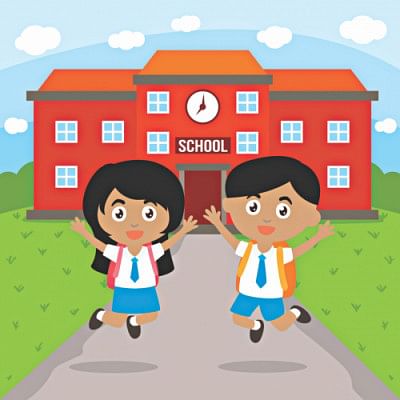
Rakin Azad, an A Level graduate, has spent most of his life studying in Dhanmondi Tutorial. This school in Dhanmondi is considered big. He said, "Studying at DT, I got to meet lots of different people. This really helped me adapt to real-world interactions, where I'd have to meet people from all walks of life. You're also more likely to meet people you resonate with. Besides the diversity in people, there was also a lot of diversity in types of activities. There were many clubs to choose from, depending on what your interests were. I got to pursue my interest in basketball by playing in the DT basketball team."
Overall, there was a large variation in the preferred types of schools. The wide range of responses showed that not everyone will enjoy the same type of school. What type of school you study in depends largely on your personality and academically what you want out of your school life. As Lubna R. Kalam said, "It matters less whether you go to a big or small school, what really matters is whether you are going to a school that is good for you."
Wasique Hasan is an A Level graduate unsure of what to do with his life. How original, I know. Let him know he's not a special snowflake at facebook.com/hasique.wasan
PHOTOS: DARSHAN CHAKMA, ORCHID CHAKMA, ARIFUR RAHMAN

 For all latest news, follow The Daily Star's Google News channel.
For all latest news, follow The Daily Star's Google News channel. 



Comments